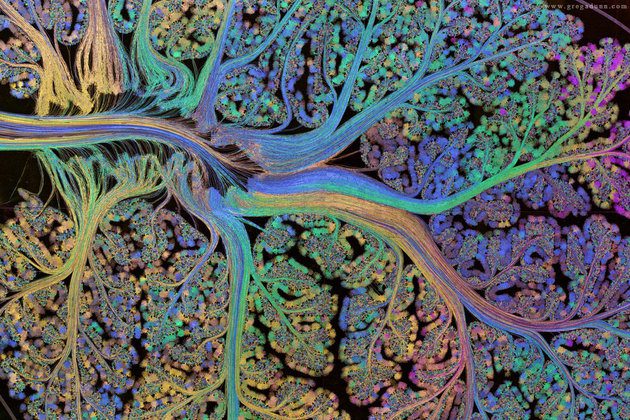
A new preprint by Filipovicetal2009* shows that striatal projection neurons (MSNs) receive different amounts of input, dependent on whether they are D2-modulated, and part of the indirect pathway, or D1-modulated, and part of the direct pathway. In particular membrane fluctuations are higher in the D1-modulated neurons (mostly at higher frequencies): they receive both more inhibitory and excitatory input. This also means that they are activated faster.
The open question is: what drives the difference in input? Do they have stronger synapses or more synapses? If the distribution of synaptic strength is indeed a universal, they could have stronger synapses overall (different peak of the distribution), or more synapses (area under the curve).
Assuming that synapses adapt to the level of input they receive, having stronger synapses would be equivalent to being connected to higher frequency neurons; but there would be a difference in terms of fluctuations of input. Weak synapses have low fluctuations of input, while strong synapses, assuming they are sent out from neurons with a higher frequency range, have larger fluctuations in input to the postsynaptic neuron.
It is also possible that the effect results from a higher amount of correlation in synaptic input to D1-modulated neurons than D2-modulated neurons. However, since correlations are an adaptive feature in neural processing, it would be unusual to have an overall higher level of correlation to one of two similar neuronal groups: it would be difficult to maintain concurrently with fluctuations in correlation which are meaningful to processing (attention).
An additional observation is that dopamine depletion reduces the difference between D2- and D1-modulated MSNs. Since membrane fluctuations are due to differences of synaptic input (AMPA and GABA-A driven), but there is only conflicting evidence that D1 receptors modulate these receptors (except NMDA receptors), one would postulate a presynaptic effect. So, possibly the effect is located at indirect pathway, D2-modulated neurons, which receive less input when dopamine is present, and adjust to a lower level of synaptic input. (Alternatively, reduction of D1 activation could result in less NMDA/ AMPA, more GABA-A, i.e. less synaptic input in a D1 dopamine-dependent way.) In the dopamine depleted mouse, both pathways would receive approximately similar input. Under this hypothesis, it is not primarily differences in structural plasticity which result in different synaptic input levels, but instead a “soft-coded” (dopamine-coded) difference, which depends on dopamine levels and is realized by presynaptic/postsynaptic dopamine receptors. Further results will clarify this question.
*Thanks to Marko Filipovic for his input. The interpretations are my own.


